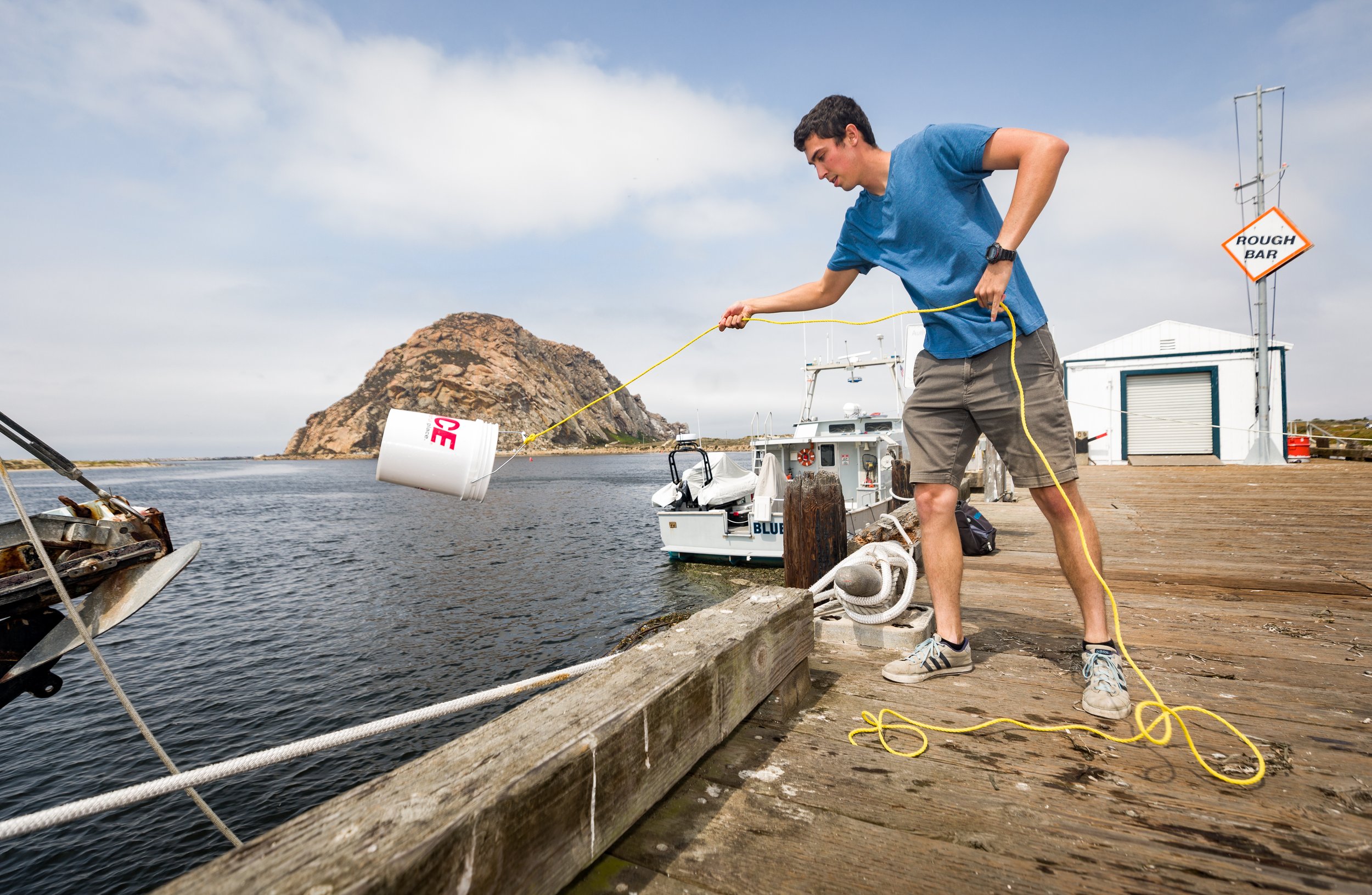Current research
CTD Rosette at Cal Poly Pier, Photo Credit: A. Pasulka
CAL POLY PIER Microbial Oceanography TIME-SERIES
Established in 2017, the goal of this time-series is to characterize the temporal variability in composition, abundance, biomass, size structure and molecular diversity of microbial communities in a nearshore coastal upwelling ecosystem. The resources and infrastructure at the Cal Poly Pier provide the foundation for this time-series. These additional measurements build upon a decade-long time-series of harmful algal bloom monitoring off the Cal Poly Pier. This time-series also provides an opportunity for Cal Poly students to be trained and educated in oceanographic sampling techniques, exemplifying Cal Poly’s Learn by Doing philosophy.
Cal Poly Pier, Photo Credit: Center for Coastal Marine Sciences
California Harmful Algal Bloom Monitoring and Alert Program (HABMAP)
Weekly monitoring program, supported by the Southern California Coastal Ocean Observing System (SCCOOS) and Central and Northern California Ocean Observing System (CeNCOOS), to detect a suite of HAB species at the Cal Poly Pier. Weekly samples are collected by undergraduate students along with senior scientist Ian Robbins. You can check out the program website, find out more information about Cal Poly Pier monitoring, access the raw data, or view data.
Our HABs monitoring site is co-located with the Cal Poly Pier Shore Station supported by CeNCOOS and coordinated by Cal Poly oceanographers Ryan Walter (Physics) and Emily Bockmon (Chemistry).
Phytoplankton sampling in Morro Bay Estuary. Photo Credit: Cal Poly
Morro Bay Estuary Phytoplankton Monitoring
Established in 2023, this weekly monitoring program of phytoplankton at two sites within Morro Bay provides insight into the temporal and spatial patterns of HAB species within the estuary. The program is supported by the Morro Bay National Estuary Program (MBNEP). Weekly samples are collected by Cal Poly undergraduate students along with MBNEP Staff. You can access the raw data here for the front and back of the bay, or view the data here. The HABs monitoring sites are co-located with the CeNCOOS-supported Morro Bay Shore Stations at the front and back of the bay.
Epifluorescent microscopy image of the the dinoflagellate grazer O. marina eating phytoplankton prey.
Photo Credit: D. Michels
Ecological tradeoffs and their impact on COASTAL ecosystem dynamics
Ecological tradeoffs play a crucial role in shaping the dynamics of marine phytoplankton communities. Phytoplankton must balance competing demands such as resource acquisition, growth, and predator avoidance. For example, some species may invest in rapid growth to outcompete others for nutrients, while others may invest in defense mechanisms, such as toxin production or physical armor, to avoid predation. Using both laboratory cultures and field experiments, we aim to explore how these varied ecological strategies structure phytoplankton communities and influence broader ecosystem functions like nutrient cycling. Understanding these ecological tradeoffs is essential for predicting how phytoplankton populations will respond to changing environmental conditions.
Blue colonial tube-dwelling folliculinid ciliates living on tube-worms in deep-sea methane seep. Photo Credit: MBARI
DEEP-sea Microbial eukaryotes
Compared to pelagic ecosystems, deep-sea ecosystems such as methane seeps are in the early stages of exploration with regard to microbial community dynamics and diversity, especially when it comes to microbial eukaryotes. Using a combination of molecular and microscopy techniques, we work to characterize the distribution and diversity of microbial eukaryotes in relationship to geochemical and biological variables over scales ranging from centimeters to kilometers in seep sediments. Additionally, we have been working to elucidate the ecology and trophic interactions of deep sea folliculinid ciliates using stable isotopes and metagenomics.




